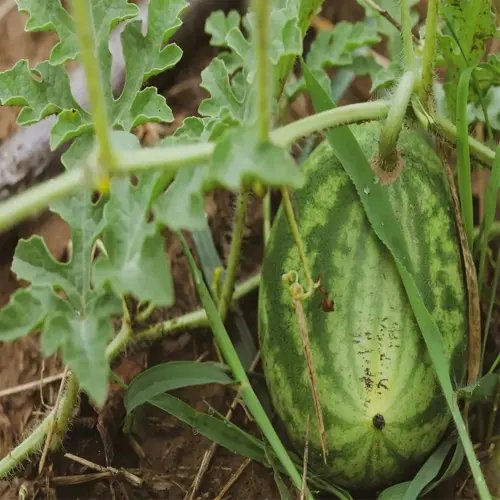How to Plant Sunflowers: Expert Guide for Vibrant Blooms

Written by
Kiana Okafor
Reviewed by
Prof. Samuel Fitzgerald, Ph.D.Successfully plant sunflowers by selecting them based on their purpose and height
Improve soil with compost after checking the PH between 6.0 and 7.5, which is optimum for growth
Plant the seeds 1-2 inches deep and 12-36 inches apart based on the type
Water one inch of water each week but don't use overhead irrigation after the buds form through the late growing season to prevent disease from occurring
Protect the plants from pests/diseases with deer fencing and soapy water sprays
Harvest heads when they are brown; dry head down in ventilated places for storage.
Article Navigation
Acquiring knowledge on planting sunflowers allows you to make gardens dynamic places, thereby enhancing the pleasures of gardening. The bright-colored giants of the sunflower world do more than please the senses; they provide nourishment for pollinators, a habitat for birds, and the potential of edible seeds. Whether you are a novice gardener or have been gardening for years, the sunflower will fit into your aspirations.
I have observed beginners having great success with dwarf kinds in patio pots and my farmer friend alternating oilseed types at full height in his fields. Plant as soon as it is possible in the spring after the last frost or as late as mid-summer; this flexibility catches many by surprise who consider these as summer annuals only. The timing is much less important than whether the ground is warm.
Don't repeat the rookie mistake I made years ago, crowding seeds. Sunflowers need room to push roots and leaves. Give sunflowers room, and they'll reward you with stems that stand up to storms and large blooms that provide shade for seedlings.
More than just being visually pleasing, these plants teach about resilience. A client once doubted her shady backyard could support sunflowers until we thought to try branching varieties. They thrived after just four hours of light--this was true among many other mistaken ideas about sunflower needs. Flexibility is part of their charm.
Soil Preparation and Planting Steps
Clay soil can be a nightmare, even for the most experienced gardeners. In doing so, you can help make it easy for sunflowers. For clay soils, improve drainage and aeration by mixing 3 inches of coarse sand into the top 12 inches of soil. Sandy soils require completely different care; add slightly compost just beneath the top 2 inches monthly to trap moisture around roots. Drainage can be visually observed by digging a hole and seeing how long it takes for the water to drain. If it drains faster than an hour, then consider amending the soil with an organic matter.
The planting depth determines whether you are successful or frustrated. I recommend burying small seeds 1 inch deep (2.5 cm) and larger seeds up to 2 inches deep (5 cm). I have lost seedlings due to late frosts, so wait until your soil temperature has warmed to 50°F (10°C). To check the soil temperature, use a meat thermometer to measure the soil 4 inches (10 cm) down. Cold soil will rot seeds before they germinate.
My seedlings were saved this spring with biodegradable pots. Planters made from peat or cow-g dung break down as roots grow, allowing the seedlings to be planted without getting transplant shock. If you soak them first, the planters break down more easily. Last year, my transplants of ‘Mammoth Grey' tomatoes were three weeks ahead of the ones in plastic containers, all thanks to being in biodegradable pots.
Frost will kill the sunflowers at 32°F (0°C). Protect the early-planted sunflowers with a row cover, or even an old bed sheet would work. A neighbor even put Christmas lights underneath the fabric to produce a little heat. Once the sun is up and it's mid-morning or so, I take the fabric off to allow the plants to get the sun without overheating. I have found that the healthy seedlings will always surpass the calendar date.
Soil Temperature
- Minimum: 50°F (10°C) for germination
- Ideal Range: 70-78°F (21-26°C) daytime
- Frost Impact: Kills seedlings below 32°F (0°C)
Seed Orientation
- Myth Debunked: No need to position pointed end down
- Science: Roots emerge from seed regardless of placement
- Best Practice: Lay flat in moist soil
Soil Drainage
- Clay Fix: Add 2 in (5 cm) coarse sand per 12 in (30 cm) depth
- Sandy Soil: Mix 3 in (7.6 cm) peat moss for water retention
- Test Method: Dig 12 in (30 cm) hole; water drainage <1 hour
Seed Depth Variations
- Small Seeds: 0.5 in (1.3 cm) depth
- Large Varieties: 2 in (5 cm) maximum depth
- Mulching: Apply 1 in (2.5 cm) straw after planting
Frost Dates
- Last Frost: Plant 1-2 weeks after local average date
- Early Frost: Use cloches for 28°F (-2°C) protection
- Zone 3-5: Mid-May to early June planting window
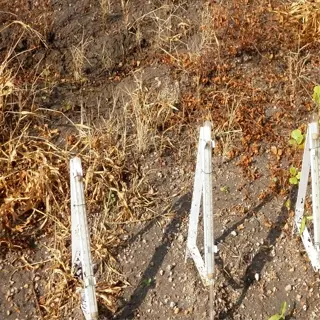
Soil Thermometer
- Accuracy: Measures ±2°F (1°C) range
- Usage: Insert 4 in (10 cm) deep
- Timing: Test morning and afternoon temps
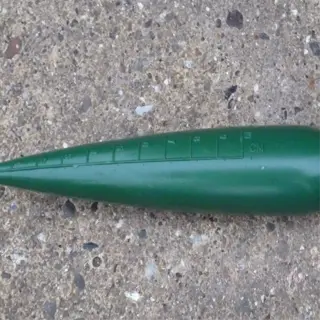
Seed Dibber
- Depth Control: Marked inch/cm measurements
- Material: Weather-resistant teak wood
- Ergonomics: Angled handle reduces wrist strain
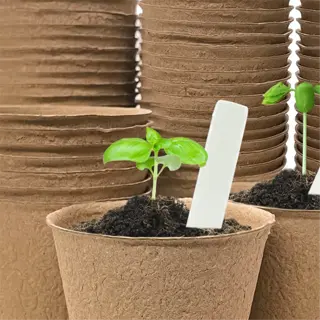
Biodegradable Pots
- Decomposition: Breaks down in 4-6 weeks
- Size: 4 in (10 cm) diameter minimum
- Planting: Bury entire pot to avoid root shock
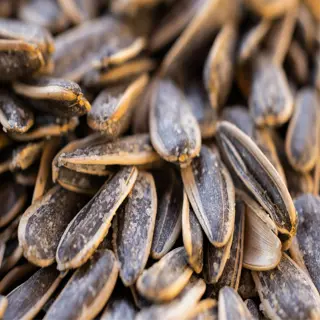
Sunflower Seeds
- Viability: 85% germination rate average
- Storage: Keep in airtight jars at 40°F (4°C)
- Treatment: No pre-soaking required
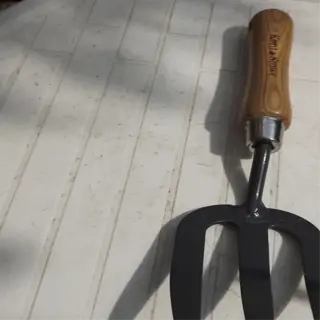
Garden Fork
- Tine Spacing: 1.5 in (3.8 cm) for clay breakup
- Depth: Loosen 12 in (30 cm) soil layer
- Material: Stainless steel rust prevention
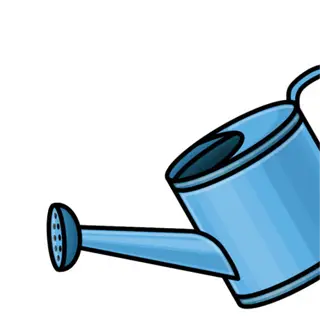
Watering Can
- Capacity: 2 gal (7.6 L) for minimal refills
- Sprinkler Head: Adjustable flow rates
- Material: Galvanized steel durability
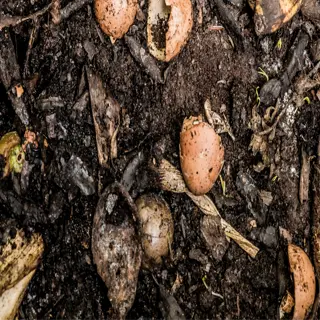
Compost
- Application Rate: 4 lb (1.8 kg) per 10 sq ft
- Nutrients: 2-1-1 NPK ratio average
- Mixing: Blend 1:1 with native soil

Mulch
- Depth: 3 in (7.6 cm) weed suppression
- Material: Wheat straw vs. pine bark options
- Replenish: Add 1 in (2.5 cm) monthly
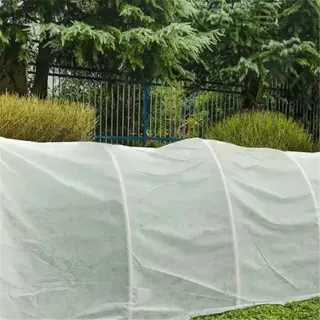
Row Covers
- Protection: 4°F (-15°C) temperature boost
- Material: Polypropylene 0.5 oz/sq yd weight
- Installation: Hoop system for air circulation

Frost Cloth
- Woven vs. Non-Woven: 30% vs 50% light transmission
- Size: 10 ft x 25 ft (3 m x 7.6 m) rolls
- Storage: Fold dry to prevent mildew
Selecting Sunflower Varieties
Varieties of flowers that do not produce pollen are referred to as pollenless varieties, and they are particularly aimed at florists and those with pollen allergies since they provide clean flowers without the messy pollen. In gardens that are designed to attract bees, you'll want to select open-pollinated varieties, such as ‘Autumn Beauty'. I've sat and watched bumblebees for hours on end, while their legs were loaded with pollen from various heirloom varieties of flowers.
Height determines placement. The dwarf 'Teddy Bear' does great at 3 feet (0.9 m) height in containers, while the 15-foot (4.6 m) giant species 'Mammoth' would command the back border of the garden. A client once profiled her property line with creatures planted at disturbingly different heights to form an attractive living privacy screen that bloomed for the entire summer.
Select planting depth based on seed size. Large striped seed such as 'Titan' needs a 2-inch (5 cm) planting depth to ensure that it will remain stable. Tiny seeds like 'SunBuzz' should not be planted any deeper than 1 inch (2.5 cm) deep because they are likely to rot. I keep a coin in my kit and use the thickness of a dime to estimate my shallow plantings.
The time from planting to harvest in sunflowers is between 50 and 120 days. The obvious choice for a continuous flush of color is a 60-day 'Sunrich Gold' variety paired with a 90-day variety called 'Russian Giant.' My success with succession planting: planting with each full moon in the months of April through July. This produces a subsequent burst of flowers as each variety matures.
Cut Flowers
- ProCut Series: Pollenless, 4-6 ft (1.2-1.8 m)
- Sunrich Gold: 5 ft (1.5 m) uniform stems
- Starburst Panache: Bi-color petals, 6 ft (1.8 m)
Edible Seeds
- Mammoth Grey Stripe: 15 ft (4.6 m) tall
- Titan: 12-14 in (30-35 cm) seed heads
- Russian Giant: Cold-hardy, 12 ft (3.7 m)
Container Gardening
- SunBuzz: 24 in (61 cm) compact growth
- Teddy Bear: 3 ft (0.9 m) double blooms
- Solar Flash: 18 in (46 cm) multi-branching
Drought Tolerance
- Lemon Queen: Perennial, 7 ft (2.1 m)
- Autumn Beauty: 6 ft (1.8 m) multi-color
- Velvet Queen: 5 ft (1.5 m) burgundy blooms
Wildlife Support
- Black Oil: High-fat seeds for birds
- Indian Blanket: Multi-branching habitat
- Maximilian: Perennial late bloomer
Optimal Growing Conditions
Adequate sunlight requirements will vary through the growth stages of plants. Seedlings can tolerate about 4-6 hours of shade-filtered light. In contrast, most larger plants typically should get over 8 hours for strong flowering. I once had a client who grew prize-winning giants by using reflective mulch to bounce additional light onto the lower leaves of their plants. We also learned that in hot areas, the morning sunshine is less harsh than the afternoon sun.
Soil pH levels between 6.0-7.5 can maximize nutrient uptake. I test the beds every year. When we noted the pH dropping to 5.8 in a community garden, we added crushed eggshells to raise the pH levels naturally. Acidic soils can also be detrimental, as lowered stems are the result. Highly alkaline conditions can yellow leaves and also stunt growth. Having balance in the soil results in blooms the size of dinner plates.
Daytime high temperatures of 70-85°F (21-29°C) combined with at least nighttime low temperatures above 55°F (13°C) produce explosive growth. This encompasses a 12-inch increase in my journal over a week that recorded 78°F/62°F daily high/low temperatures. Frost cloth can protect below 50°F (10°C) when needed, but prolonged sequences of high temperatures will reduce pollen viability when above 95°F (35°C).
Adequate spacing enhances stem strength and stability. Plants labeled 'Moulin Rouge' that were too close together at 18 inches were easily blown over in the wind, while plants marginally wider apart, at 30 inches, survived just fine. Airflow is an important factor; my neighbor had multiple bougainvillea plants infected with mildew until she opened up her row spacing to 3 feet, allowing for more air circulation.
Sunlight Exposure
- Seedlings: 4-6 hours partial shade tolerance
- Bud Formation: Requires uninterrupted 8+ hours
- Heliotropism: Young flowers track sun movement
Soil Composition
- Clay Soils: Amend with 3 in (7.6 cm) coarse sand
- Sandy Soils: Add 2 in (5 cm) compost monthly
- Drainage Test: 1 in (2.5 cm) water per hour per 12 in (30 cm) depth
Temperature Limits
- Germination: 50-78°F (10-26°C)
- Frost Damage: Occurs below 32°F (0°C)
- Heat Stress: Above 90°F (32°C) reduces pollination
Spacing Guidelines
- Dwarf Varieties: 6-12 in (15-30 cm) between plants
- Giant Types: 24-36 in (61-91 cm) required
- Row Spacing: 30 in (76 cm) minimum for equipment
Water Management
- Seed Stage: Keep top 2 in (5 cm) moist
- Mature Plants: Deep watering every 5 days
- Avoid: Overhead irrigation after bud formation
Pest Control and Weed Management
Pest management without chemicals begins with prevention. I have stopped an aphid invasion with a soapy water insect spray, mixing 1 tablespoon of castile soap with a quart of water. For slugs, I have found that a barrier of crushed eggshells works better than using chemical pellets. Chemical options, such as glyphosate, work quickly but kill beneficial earthworms as well. Use chemicals only for severe infestations.
Birds pecking at seed heads? Consider simply using mesh bags secured with twine. A vineyard client utilized grape netting, repurposed from her vineyard, over her sunflowers, preventing seed consumption while still providing access for bees. Reflective ribbons deterred crows and other birds but didn't bother the hummingbirds. Rotation of these tactics every week was the only way they could deal with the relentless flock of birds.
Pre-emergent corn gluten will prevent weeds before they germinate or appear aboveground and should be applied after the soil warms. Post-emergent treatments, like vinegar solutions, can be used to burn and kill young weeds but can be challenging to apply with precision. I often treat weeds in a garden with a paintbrush dipped in 20% vinegar, then use a garden tongue to shield the sunflower roots planted nearby.
Deer tend to stay away from fuzzy-stemmed varieties, such as ‘Mammoth Grey'. A neighbor has a row of the 7-foot-high hybrid type called ‘Titan' that remained intact while their shorter hybrids got browsed on. Tall varieties can create a natural barrier, and you can use them at the edge of your property. As a rule, any type in the bitter-tasting category (i.e., ‘Black Oil') won't be eaten.
Natural Deterrents
- Marigold Companion Planting: Repels nematodes
- Aluminum Pie Plates: Reflect light to scare birds
- Coffee Grounds: Deters slugs/snails
Organic Treatments
- Neem Oil: Disrupts aphid life cycle
- Diatomaceous Earth: Kills crawling insects
- Vinegar Solution: 1:3 vinegar-to-water ratio for young weeds
Chemical Controls
- Glyphosate: Spot-treat perennial weeds
- Imidacloprid: Systemic insecticide (use cautiously)
- Preen: Pre-emergent for 6-week protection
Cultural Practices
- Crop Rotation: Break pest cycles
- Solarization: 6-week soil sterilization
- Stale Seedbed: 2-inch tillage before planting
Physical Barriers
- Floating Row Covers: 0.5 oz/sq yd fabric
- Chicken Wire Collars: 12-inch height around seedlings
- Tree Guard Spiral: Protect mature stalks
Harvesting and Extending Blooms
To harvest seeds, let them mature until the backs of the flower heads turn a nice chocolate brown and they fall off with just a gentle shake. For cut flowers, cut them early in the day when the petals start to open. I recently saved some wilting flowers by placing them directly into 110°F (43°C) water as they wilted, and they revived for week-long displays.
To avoid the problem of mold, store seeds at 8 well sipped-10% moisture. A farmer I knew taught me the nail test: push a thumbnail into a seed and if the imprint is still there, dry longer. I use silica packets inside glass jars to keep my seeds alive for five winters.
While air-drying preserves the vitality of the seed, it will take three weeks. Hang the heads upside down in mesh bags to allow airflow. Oven-drying at 100 degrees Fahrenheit (38 degrees Celsius) is faster, but may also crack the shells. I learned the hard way when a friend of mine lost her entire batch of seeds in the dehydrator because she set it too high. Low heat is the way to go.
Deadheading is very effective. Each week after the flowers had faded, I deadheaded ‘Autumn Beauty' and it kept on blooming until frost! Rather than snip back into the stems above faded blossoms, cut above the first set of healthy leaves to direct energy towards new buds. A neighbor in the neighborhood deadheaded on a staggered schedule,each week they deadheaded a section of their garden, which yielded nonstop color from early June until October!
Optimal Harvest Time
- Visual Cue: Back of head turns yellow-brown
- Tactile Test: Seeds detach easily when rubbed
- Timing: Avoid harvesting after rain
Seed Drying Process
- Air Circulation: 1 ft (30 cm) between hung heads
- Temperature: 70-80°F (21-27°C) ideal
- Humidity: Keep below 60%
Prolonging Cut Blooms
- Water: Change daily with flower food
- Stem Care: Re-cut underwater every 3 days
- Environment: Keep away from ripening fruit
Seed Storage Tips
- Container: Glass jars with silica packets
- Labeling: Include variety/date
- Rodent Proof: Metal containers preferred
Succession Planting
- Staggered Sowing: Every 2 weeks
- Variety Mix: 70-day + 90-day maturities
- Frost Planning: Last planting 8 weeks before frost
5 Common Myths
Once the sunflowers mature, it is important to note that they will forever face east.
Mature sunflower heads may have an eastern facing direction to get a little additional warmth from the morning sun, however young sunflowers will track the sun for optimum growth (heliotropism). However, the permanent eastern orientation occurs only after the plant has flowered, to optimize the maturity of the seeds and provide protection from nightly moisture.
All sunflowers grow over 10 feet tall.
Dwarf varieties like 'Teddy Bear' reach only 2-3 feet, while giants like 'Mammoth Grey Stripe' need ideal conditions to exceed 12 feet. Most garden varieties mature at 5-8 feet depending on soil quality.
Sunflowers completely drain soil nutrients.
Though heavy feeders, sunflower roots improve soil structure by breaking up compaction. When rotated with nitrogen-fixing crops and their stalks composted, they contribute organic matter rather than depleting nutrients long-term.
Sunflower seeds should be soaked prior to planting.
Wild seeds do not soak when fresh - the hard seed coat supports the embryo as it germinates naturally. Soaking fresh seeds creates the risk of fungal rot in cooler soils. If you directly introduce sunflower seeds into soil above 55F (13C), the seeds will germinate without your intervention.
Sunflowers cannot grow in partial shade.
While thriving in 6+ hours of sun, varieties like 'SunBuzz' tolerate 4 hours of sunlight. In hot climates, afternoon shade prevents wilting. Expect 20% smaller blooms but full seed development.
Conclusion
Sunflowers look beautiful in almost any garden style or place: container patios, large agricultural landscapes, or wildflower meadows. I helped a client take over her balcony using dwarf ‘SunBuzz' pots, and a nearby elementary school turned a 20-foot-row of ‘Skyscraper' sunflowers into a living science lesson. I think of their versatility as a creative canvas within large and small spaces.
Try succession planting: sow seeds every three weeks from early April until mid-July. I write down plantings on our kitchen calendar: red circles for ‘Velvet Queen,' blue for ‘Russian Giant.' This pattern brings cut flowers to the neighbors from the first blooms in June to the last blooms of frost in October.
Sunflowers are a great way to get new gardeners started. They can handle being under-watered, and they keep the pests to a minimum on a well-established sunflower plant. A first-time gardener grew the 6-foot tall ‘Evening Sun' and checked the plant only once a week, which demonstrates that you can grow big beautiful plants without constant care. Start small, then increase your growing empire of golden flowers.
Seasonal attention to care ensures success. Each spring, it is helpful to replenish the soil from the previous year with compost; giants should be staked before summer storms occur. Be sure to leave winter stalks standing for birds to enjoy during the winter months. Mulch the roots before frost, then observe the squirrels plant the volunteers for next year. Sunflowers offer to give infinite cycles of wonder to those who give care to them.
External Sources
Frequently Asked Questions
When is the ideal time to plant sunflowers?
Plant sunflower seeds after the last spring frost when soil reaches 50-55°F. In most regions, this falls between April and June. Succession planting every 2-3 weeks extends blooms into fall.
What's the proper method for planting sunflower seeds?
For best results:
- Choose a sunny location with well-drained soil
- Plant seeds 1-2 inches deep depending on variety size
- Space seeds 6-36 inches apart based on mature plant width
- Water thoroughly after planting
Are sunflowers perennial plants?
Most sunflowers are annuals completing their lifecycle in one season. Perennial varieties like 'Lemon Queen' exist but require specific growing conditions. Check seed packets for plant type before purchasing.
Do sunflower seeds require soaking before planting?
No soaking necessary - fresh seeds contain enough moisture for germination. Soaking increases rot risk in cool soils. Plant directly in warm soil above 55°F for natural sprouting.
How much sunlight do sunflowers need daily?
Sunflowers require minimum 6 hours of direct sunlight. Morning sun with afternoon shade works in hot climates. Insufficient light causes weak stems and small blooms.
What's the biggest mistake when watering sunflowers?
Overwatering causes root rot. Water deeply 1-2 times weekly, providing 1 inch total. Use drip irrigation or water at soil level - wet foliage encourages fungal diseases.
How do I protect sunflowers from pests?
Effective pest strategies include:
- Install 7-foot fencing to deter deer
- Use soapy water spray for aphids
- Cover seed heads with mesh to block birds
- Apply diatomaceous earth around stems for slugs
Can I grow sunflowers in containers?
Yes - choose dwarf varieties under 3 feet tall. Use 5-gallon pots with drainage holes and quality potting mix. Container sunflowers need more frequent watering and feeding.
What soil conditions do sunflowers prefer?
Sunflowers thrive in:
- Well-drained loamy soil
- pH between 6.0-7.5
- Soil amended with compost or aged manure
- Avoid heavy clay without drainage improvements
How long until sunflowers bloom after planting?
Bloom time varies by variety - fast-growing types flower in 50-60 days, giants take 80-120 days. Stagger plantings for continuous summer-to-fall color.

